The Data Portfolio is a compendium of particle physics classroom activities organized by Data Strand, Level of student engagement, Curriculum Topics and NGSS Standards. Follow the links provided for information about using the Data Portfolio to plan your students’ experience. Level descriptions explain the data analysis skills that students apply at each level: tasks in Level 0 are simpler than those in Levels 1 and 2. Click on the links below to learn more.
We encourage you to visit this webpage often as we frequently update it with new activities and resources. Examples include adding an activity that incorporates data from World Wide Data Day, Spanish language translations of several activities, and activities that support data science through coding skills development either as stand-alone activities or as a resource for existing DAP activities.
All materials are available under the Creative Commons CC BY-NC-SA 4.0 license.
| Activity Name | Data Strand | Level | Curriculum Topics | NGSS Practices |
|---|---|---|---|---|
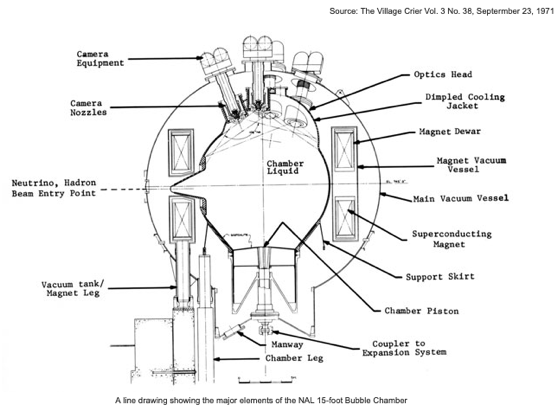 Making Tracks II
Making Tracks IIStudents analyze tracks in a bubble chamber. |
Cosmic Ray, LHC, Neutrino | Level 1 | Conservation Laws, Nature of Matter, Skill: Developing Models, Standard Model | 1, 2, 4, 6, 7 |
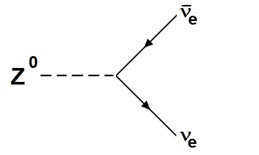 Particle Transformations
Particle TransformationsStudents discover the rules of particle transformations using transformation diagrams. |
Cosmic Ray, LHC, Neutrino | Level 1 | Conservation Laws, Nature of Matter, Skill: Developing Models, Standard Model | 1, 2, 4, 6, 7 |
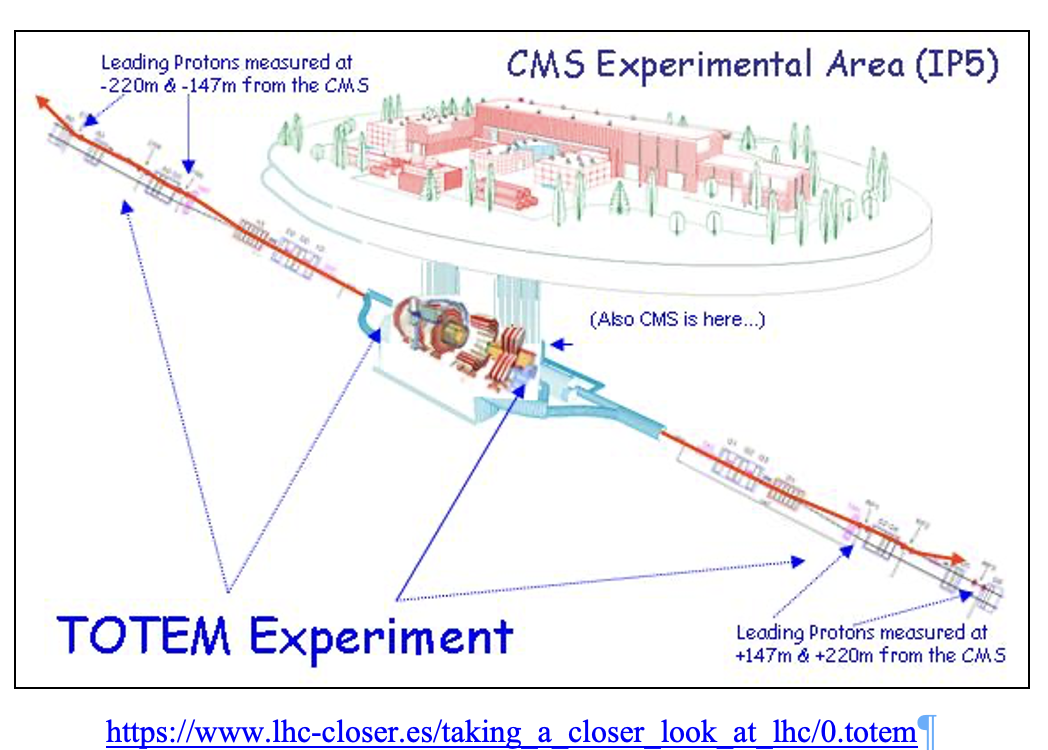 TOTEM 1
TOTEM 1Students use TOTEM data to determine if protons (quantum objects) obey classical conservation of momentum. |
LHC | Level 1 | Conservation Laws, Nature of Matter | 4, 5, 8 |
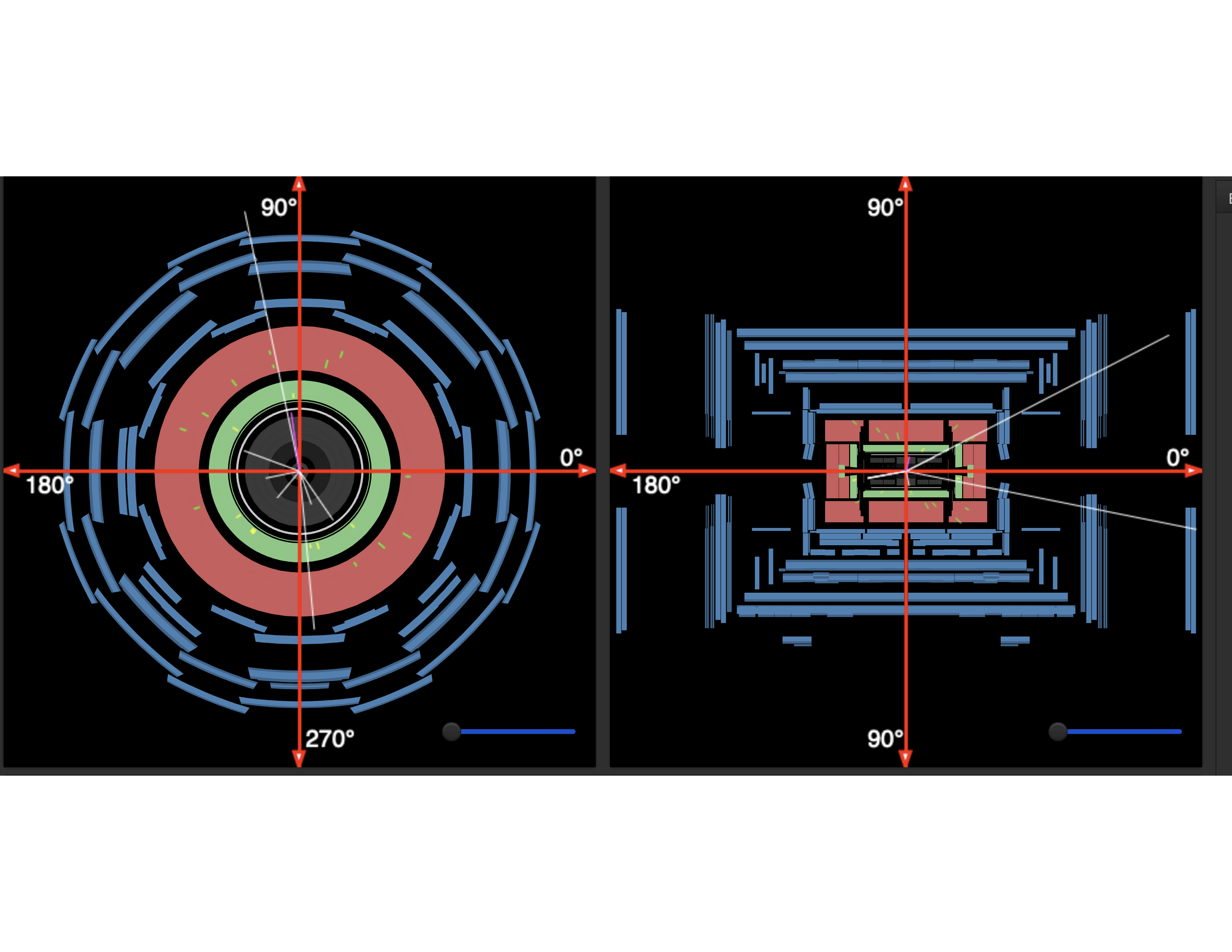 Angles and Dimuons
Angles and DimuonsThis activity is based on the data analysis used for World Wide Data Day, |
Cosmic Ray, LHC | Level 1 | Conservation Laws, Nature of Matter, Skill: Developing Models, Skill: Histograms, Skill: Uncertainty | 2, 4, 5, 6, 7, 8 |
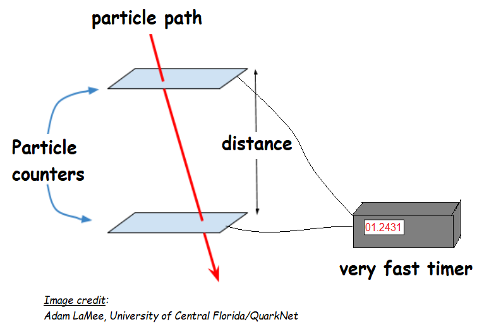 How Speedy are These Muons?
How Speedy are These Muons?In this activity, students use authentic detector data to apply simple 1D kinematics (v=d/t), interpret graphical data, and evaluate measurement uncertainties. |
Cosmic Ray | Level 1 | Kinematics, Nature of Matter, Skill: Graphing, Skill: Histograms, Skill: Uncertainty | 2, 3, 4, 5, 7, 8 |
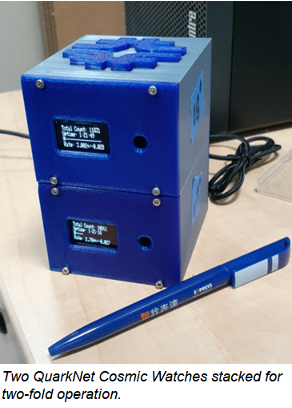 Cosmic Watch Lab Suite
Cosmic Watch Lab SuiteThis Cosmic Watch Suite of data activities describes experiments that can be done either at the singles or two-fold rate. |
Cosmic Ray | Level 1 | Nature of Matter, Quantum Mechanics, Skill: Developing Models, Skill: Graphing, Skill: Uncertainty | 1, 2, 4, 5, 6, 7 |
| Students use conservation laws and vector addition to calculate the Z mass from event displays. |
LHC | Level 2 | Conservation Laws, Nature of Matter, Spanish Language, Special Relativity, Standard Model, Skill: Coding, Skill: Developing Models, Skill: Uncertainty | 1, 2, 4, 5, 6, 7, 8 |
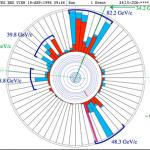 Calculate the Top Quark Mass
Calculate the Top Quark MassStudents use conservation laws and vector addition to calculate the top mass from event displays. |
Cosmic Ray, LHC | Level 2 | Conservation Laws, Spanish Language, Special Relativity, Standard Model, Skill: Uncertainty | 1, 4, 5, 7 |
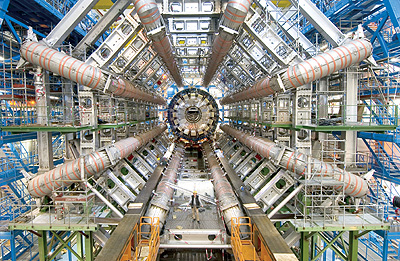 ATLAS Z-path Masterclass
ATLAS Z-path MasterclassStudents are physicists for a day at a university or lab where they work with physiists to how to analyze real particle physics data in the form of event displays. |
LHC | Level 2 | Conservation Laws, Nature of Matter, Skill: Histograms, Skill: Uncertainty | 1, 2, 4, 5, 6, 7, 8 |
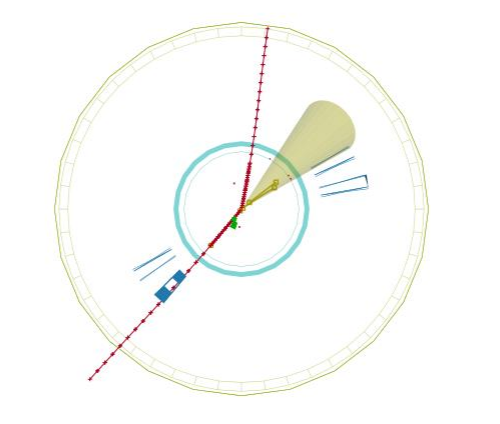 CMS Data Express
CMS Data ExpressCMS Data Express is a short investigation in which students inspect and characterize W or Z events from the LHC. |
LHC | Level 2 | Conservation Laws, Nature of Matter, Skill: Developing Models, Skill: Histograms, Skill: Uncertainty | 1, 2, 4, 5, 6, 7, 8 |